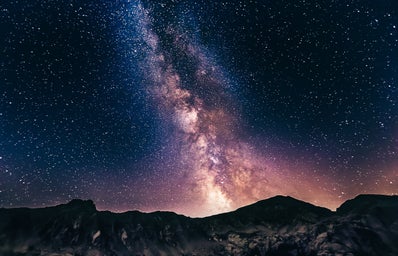Humanity has long been fascinated by the stars, gazing up and dreaming since times of ancient lore. In fact, their steady magnetism is so long-ingrained in our history that it is difficult to pinpoint precisely when their strong allure began.
Perhaps they were once utilized as beacons, a way to traipse home after a weary day of fruit-and-game-gathering. Perhaps they were a common symbol, binding even those who had not yet devised a mode of speech.
Perhaps they were revered: their patterns tracing omens, stories scattered up high by the Gods.
However, all that is known is that the stars our grandparents saw—and their grandparents, and their great-great-grandparents, and all who came before—are the same ones lighting up our current nights.
The Stars, The Myths, The Legends
The human race has (curiously) shown to gravitate towards classifications, possessing some odd obsession with forming clear-cut, distinct groups. It thus comes as no surprise that our ancestors—unwilling to admire a scattered sea of light—devised a way to group the pinpricks, to classify their shine into more identifiable patterns.
These patterns, of course, are constellations. A “connect-the-dots,” if you will, shaping the stellar clusters into symbolic types.
- Objects (cups, like the Big Dipper).
- Animals (like Cygnus, the swan).
- Figures of legend (the hunter, Orion).
Often, these patterns were culture-specific, reflecting the myths and legends revered at the time.
And yet, one grouping seems to have remained intact throughout thousands of years.
Not a “real” science — and yet, it remains, nonetheless
The Zodiac.
Twelve symbols—(wo)man, object, and beast—each aligned with a different time of year, following the patterns of the sun. A fish, archer, or bull; a lion, a pair of scales.
These images were not devised from thin air. No, they came from somewhere—
—they came from the shapes in the stars.
It was the ancient Babylonians, we believe, who devised the Western system. They were a group of academic dreamers, nearly three millennia ago. They gazed up into the night, recording what they saw—and these records remain with us, centuries down the line.
Quite literally, “astrology”—the term now used to characterize this study of the stars—means, well, “the study of the stars.” Because that’s precisely what these astronomers did, years before there was such thing as “science”: they studied the stars. And they used their observations for predictions: predictions about the weather and the crops; of personality, of divinity and omens.
Over the years, this field ebbed and flowed. For a time, it was revered, as trusted as, say, medicine; even Shakespeare tapped into it throughout his famous writings.
And yet, in recent years, it’s lost its revered status.
Today, it is considered not science but pseudoscience. Its findings are not backed up, no empirical evidence anywhere in sight. No experiment can tell if its claims all hold true; its claims cannot be proven (nor disproven).
And so, it’s no longer a science.
Yet still, that doesn’t mean that it’s lost all its popularity.
Despite its lack of evidence, many still flock to it—downloading horoscope apps to their phones and reading predictions at the start of every week. Despite its fall from grace, it’s as popular as ever—used for entertainment, yes, but also self-discovery.
You see, being able to classify yourself into a group, to feel like you belong, is quite a powerful thing. Perhaps that is its greatest draw: that, by knowing just the date, the month of one’s own birth, that one can learn about themselves, their goals, their traits.
Astrology may not be a science, but it allows practicers to self-reflect. By offering up positive labels—personality traits, suggestions, and the like—one becomes driven to look into themselves, to connect with what they read. And that, in itself, is quite a powerful thing.
So… what about the *real* science of the stars?
We know much more about the stars today than we did those millennia ago. Sure, today, we know that constellations can’t predict one’s personality, nor are they a conduit for communications with the Gods.
And yet, we know they’re made of dust, collapsing within their own gravitational attraction.
We know they undergo nuclear fusion. Two elements within it—two hydrogens, to start—collapse and form helium, a slightly-more-massive substance that continues to grow.
We know that that releases energy: heat, energy, and light. That fusion? That is how it shines. It also provides the energy to keep the star alive, pulsate, and hold it up so as not to collapse under its weight.
They’re red, or blue, or white—depending on their size, energy, and heat.
And most of them are older than the Earth itself.
That’s why we see the same patterns today as we did aeons ago. Orion, the Big Dipper, the Zodiac: we still see them up there, twinkling through the night.
Perhaps they’ve burned out already, their dust and gas released back to the night. We don’t know—our generation never will. The stars are so, so far that their light may take generations to reach us.
There’s still so much about them to be found—so much that we do not yet know.
So, for now, we look up at them. We make wishes, and we smile.
For now, they hold our secrets.
And then one day… one day, we will hold theirs.
References:
https://science.nasa.gov/astrophysics/focus-areas/how-do-stars-form-and-evolve


